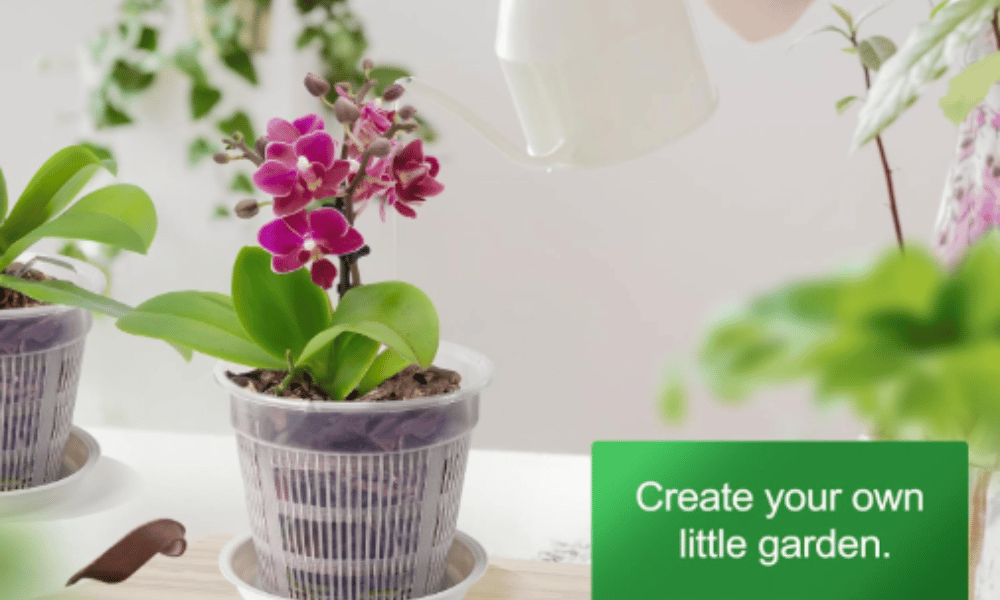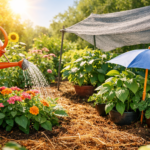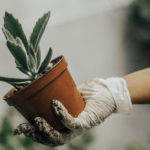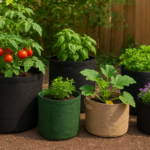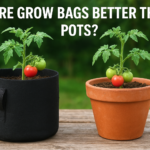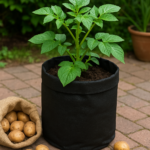When you first buy an orchid, one of the strangest things you might notice is the pot—it’s full of holes! Unlike typical flower pots, orchid pots often look more like Swiss cheese. But there’s a good reason for that, and it’s not just aesthetics. The unique design of orchid pots plays a critical role in the health and longevity of the plant. Orchids are not like your average houseplants. They’re epiphytes, which means they grow on trees in their natural habitats, not in soil. This means they’ve adapted to conditions where air can freely move around their roots, and water drains away quickly.
These openings serve a very real purpose—to replicate the orchids’ natural environment as closely as possible. So if you’re serious about growing a happy, healthy orchid, understanding the logic behind those holes is a great place to start.
Understanding Orchid Roots and Their Needs

Orchid roots are quite different from the roots of other houseplants. Instead of thriving in dense, moist soil, orchid roots need air and light. That’s because most orchids are epiphytes, meaning they grow on trees or rocks in the wild. They don’t grow in dirt but cling to surfaces where their roots are exposed to the open air. This unique lifestyle has shaped how orchids absorb moisture and nutrients—they do it directly from the air and occasional rainfall.
Because of these natural needs, orchid roots can easily rot if they stay wet for too long. They also suffocate when planted in traditional potting soil. That’s why orchid pots are designed with plenty of holes—these holes provide crucial ventilation and allow water to drain rapidly, mimicking the orchid’s native habitat.
When orchid roots get what they need—good airflow and just the right amount of moisture—they thrive. Healthy roots lead to lush leaves and stunning blooms. So when you see an orchid pot full of holes, it’s not a design flaw—it’s a lifeline for the plant inside.
Air Circulation and Root Health
Air circulation is perhaps the most essential aspect of orchid care. In fact, poor airflow is one of the leading reasons why many orchids die in the hands of beginner growers. The roots need oxygen just as much as they need moisture, and a pot without sufficient holes simply can’t provide that.
Those holes you see in orchid pots allow fresh air to flow directly into the root zone. This prevents the roots from sitting in stagnant, humid air, which can lead to rot, mold, and fungal infections. Think of it like this: would you want to wear wet socks all day with no way to let your feet breathe? That’s what it’s like for orchid roots trapped in a non-ventilated pot.
Good airflow also stimulates root growth. When roots are healthy and encouraged to spread out, they anchor the plant better and absorb nutrients more effectively. In fact, many orchid growers purposely choose clear plastic pots with holes so they can keep an eye on root health. If you want vibrant, blooming orchids, giving those roots room to breathe is absolutely essential.
Natural Orchid Growing Conditions
To really understand why orchid pots need holes, it helps to think about how orchids grow in the wild. In their natural environment—often rainforests—orchids attach themselves to the bark of trees. Their roots cling to the surface, completely exposed to air and light. Rainfall provides moisture, but because the water runs off quickly, the roots are never left soggy.
This balance of moisture and airflow is crucial. When we grow orchids indoors, we need to recreate this delicate environment as best as possible. Regular pots trap moisture and limit airflow, which is the opposite of what orchids are used to. That’s why specialized orchid pots are designed with side and bottom holes—these mimic the breezy, well-drained conditions of a rainforest canopy.
The Role of Drainage in Orchid Pots

Proper drainage is vital for every orchid. Water that lingers at the bottom of the pot can spell disaster. That’s where those holes come in again—they allow excess water to escape quickly, so roots aren’t sitting in a puddle.
Many beginners make the mistake of overwatering orchids, especially when using pots without adequate drainage. Orchid roots are sensitive and can rot within days if kept too wet. The holes in orchid pots ensure that water flows freely out of the container, leaving the growing medium just moist enough to keep the roots hydrated but not drenched.
Drainage holes also help prevent the buildup of mineral salts and bacteria. When water drains out properly, it carries away any contaminants instead of letting them sit around the roots. This keeps the root environment clean and encourages healthier growth. Whether you’re using bark, moss, or a mix, the drainage provided by these holes keeps everything in balance.
Preventing Root Rot
Root rot is the silent killer of orchids. It often starts slowly, with yellowing leaves or mushy roots, but by the time you notice it, the damage may already be done. One of the best ways to prevent root rot is by using a pot with sufficient holes for airflow and drainage.
When orchid roots are exposed to stagnant water for too long, they start to break down. They become brown, soft, and lifeless. These rotting roots can no longer absorb water or nutrients, causing the entire plant to suffer. By ensuring proper ventilation and drainage, you can avoid this deadly cycle.
Controlling Moisture Levels
One of the trickiest parts of caring for orchids is getting the moisture levels just right. Orchids like to stay hydrated, but they hate sitting in wet conditions. Too dry, and their roots shrivel. Too wet, and they rot. This is where the design of orchid pots becomes crucial. The multiple holes around the pot help maintain a perfect balance by allowing excess moisture to evaporate and escape.
Controlling moisture is especially important because most orchids grow in bark, moss, or coconut husk—materials that retain just enough water to keep roots damp without drowning them. If these materials are placed in a regular pot without ventilation, they hold on to too much water, which quickly creates a soggy environment.
When you use a pot with plenty of holes, it keeps the air moving and encourages quick drying after each watering. This replicates the orchid’s natural environment, where moisture comes and goes rapidly after rainfall. Consistent airflow and drainage also help regulate the temperature of the root zone, which further supports optimal growth. So, if you’ve struggled with overwatering in the past, switching to a pot with lots of holes can be a game-changer.
Types of Holes in Orchid Pots

Not all orchid pots are created equal. The placement, size, and number of holes can vary widely, and each variation serves a different purpose. Some pots have large slits down the sides, while others have small perforations scattered throughout the body. Some even have mesh bottoms to allow maximum airflow.
Side holes are excellent for promoting lateral airflow. They let oxygen in and help excess water evaporate faster. These are ideal for orchids that like their roots on the drier side, like Cattleyas or Dendrobiums. Bottom holes, on the other hand, ensure that water doesn’t pool at the base of the pot, which is key for preventing root rot.
Then there are full ventilation pots, which are often made of mesh or plastic with holes on every surface. These are perfect for growers in humid climates or those who want to be extra cautious about airflow and drainage. The trade-off? You’ll need to water more often since these pots dry out very quickly. Choosing the right type of hole configuration depends on your growing environment and the specific orchid species you’re caring for.
Side Holes vs Bottom Holes
You might be wondering: do side holes really make a difference compared to bottom holes? The answer is yes—and understanding the role of each can help you choose the best pot for your orchid.
Bottom holes serve one major function: drainage. They allow water to escape quickly, preventing it from sitting at the base of the pot and soaking the roots. This is the bare minimum every orchid pot should have. Without bottom drainage, you’re basically setting your orchid up for root rot.
Side holes, on the other hand, are all about airflow. They allow air to move across the entire root system, not just around the base. This simulates the open, airy environment that orchids love in the wild. Side holes also help bark-based potting mixes dry more evenly, which is important for maintaining consistent moisture levels.
So ideally, an orchid pot should have both bottom and side holes. The combination ensures proper drainage while also maximizing oxygen exposure to every part of the root system. It’s like giving your orchid a breath of fresh air—literally.
Full Ventilation Pots
Full ventilation pots are the ultimate choice for serious orchid enthusiasts. These are pots that take the “holes” concept to the next level. Instead of just a few openings at the sides or bottom, these pots often feature a mesh or lattice design that allows for 360-degree airflow. Every part of the orchid’s root system is exposed to light and air, mimicking exactly how they grow in nature.
These pots are especially beneficial in high-humidity climates or for orchids that are prone to rot. With full ventilation, you can water your orchid without fear of moisture lingering for too long. These pots also dry out faster, which makes them perfect for orchids that like their roots to completely dry out between waterings—like Vandas and some Cattleyas.
There’s also a visual benefit: you can monitor your orchid’s root health at all times. You’ll easily spot signs of root rot, pests, or dehydration. However, full ventilation pots do require more frequent watering since they lose moisture quickly. So if you’re someone who forgets to water plants, you might want to pair this pot with a moisture-retentive potting mix or adjust your watering schedule.
Difference Between Regular and Orchid Pots

At first glance, orchid pots might just look like quirky plant containers. But once you understand their purpose, the difference between regular pots and orchid pots becomes crystal clear. Traditional pots are designed to hold soil and retain moisture—perfect for houseplants like pothos or ferns. But orchids don’t play by those rules.
Orchid pots are specifically engineered to encourage air movement and rapid water drainage. The multiple holes allow the potting mix to stay loose and airy, preventing the suffocation of the roots. Regular pots, on the other hand, usually have just one small drainage hole at the bottom, which isn’t enough for orchids’ needs.
Using a regular pot for an orchid can lead to moisture buildup, root rot, and poor growth. Sure, you might try to modify a standard pot by drilling extra holes—but why not start with a pot made for the job? Whether it’s plastic, clay, or ceramic, orchid pots are designed with the plant’s unique biology in mind.
What Makes Orchid Pots Unique
So what exactly sets orchid pots apart? It’s not just the holes. It’s the entire design philosophy behind them. From shape and size to materials and structure, orchid pots are customized to suit the needs of these tropical beauties.
Many orchid pots are clear or translucent, allowing you to monitor root health. They’re often narrower and deeper to mimic how orchids anchor themselves in crevices on trees. The holes—whether on the sides, bottom, or all over—are there to recreate a breezy, fast-draining environment.
Orchid pots also tend to pair with specific potting mixes like bark chips, sphagnum moss, or perlite blends. These materials don’t compact the way soil does, which further enhances drainage and aeration. Everything about the orchid pot is built around one goal: keeping roots healthy and happy. And as any orchid lover knows, healthy roots = beautiful blooms.
Can You Use Regular Pots for Orchids?
Technically, yes—you can use regular pots for orchids, but it’s definitely not recommended if you want them to thrive. Regular pots are made for typical houseplants that grow in soil and don’t require high levels of airflow. These pots often lack adequate drainage and ventilation, which are essential for orchid health. The risk you run with regular pots is that they trap too much moisture, causing root rot and fungal infections, which can quickly kill your plant.
If you absolutely must use a regular pot, you’ll need to modify it. This might involve drilling extra holes in the bottom and along the sides to simulate the airflow provided by a proper orchid pot. Even then, it’s not ideal. Most regular pots are made from ceramic or glazed materials that retain moisture longer than plastic mesh or unglazed terracotta—materials commonly used in orchid pots for their breathability.
You should also consider the root visibility. Many orchid pots are transparent or translucent, letting light in and allowing you to monitor root growth. Regular pots block this view entirely. So while it’s possible to grow orchids in standard containers, it’s an uphill battle. For ease and better results, stick with a pot that was made for orchids.
Benefits of Orchid Pots with Multiple Holes
When it comes to growing orchids, the phrase “more holes, more benefits” definitely applies. Orchid pots with multiple holes offer a range of advantages that directly impact the health and growth of your plant. The most obvious benefit is superior drainage. Multiple holes ensure that water flows out of the pot quickly and doesn’t linger at the bottom, which is key in preventing root rot—a common issue with orchids.
Another huge perk is enhanced airflow. Orchid roots love breathing room, and pots with side holes allow air to circulate around the entire root system. This helps to mimic the orchid’s natural growing conditions, where roots are exposed to open air and not buried in soil. This constant airflow helps the roots stay firm, green, and capable of absorbing nutrients efficiently.
Also, having multiple holes allows for faster drying of the potting medium, whether you’re using bark, moss, or a mix. This keeps the environment less hospitable for bacteria and mold. It also gives you more control over watering routines. And finally, multiple holes make it easier to check on root health. You can spot rotting or dehydrated roots early on and take action before the whole plant suffers.
.
Materials Used in Orchid Pots
Orchid pots come in a variety of materials, each offering different benefits depending on your climate, watering habits, and orchid type. Plastic pots are the most common because they’re lightweight, affordable, and usually transparent, which allows you to monitor root health easily. They also retain moisture slightly longer than clay, which can be helpful in drier environments.
Clay or terracotta pots, on the other hand, are porous and provide excellent breathability. They help wick moisture away from the potting mix, promoting faster drying and cooler roots. The downside is that they’re heavier and can crack if dropped. However, they’re ideal for orchids that like to dry out completely between waterings, such as Cattleyas.
Ceramic pots often come with decorative designs and built-in holes, making them both functional and stylish. These are great for display, but you’ll want to ensure they have proper drainage and ventilation holes. Some ceramic pots are glazed, which traps moisture inside, so they might not be the best option for all orchids.
How to Choose the Right Orchid Pot
Choosing the right orchid pot is more than just picking the prettiest one on the shelf. The best pot for your orchid depends on the species of orchid, your environment, and your watering habits. First, consider the size of the pot. It should be just large enough to hold the root system—no bigger. Orchids prefer snug spaces because it helps anchor them and prevents overwatering.
Second, think about ventilation. Does the pot have holes along the sides and bottom? If not, you’re likely setting your orchid up for problems. The more airflow, the better, especially if you’re using a bark-based mix. For moss-based media, you might want fewer holes since moss retains moisture for longer.
Also, consider the material of the pot. Plastic is great for beginners and indoor growers, while clay offers better airflow and faster drying for more advanced caretakers. If you’re growing your orchid in a humid environment, a terracotta pot might be ideal. On the flip side, if you live in a dry climate, plastic can help retain moisture longer.
Common Mistakes in Potting Orchids
Potting orchids might seem straightforward, but there are some common mistakes that can seriously hinder your plant’s health.
- One of the biggest mistakes beginners make is using the wrong type of pot—specifically, regular pots without sufficient drainage or airflow. Orchids are not like other houseplants; they need specialized containers with multiple holes to thrive.
- Another frequent mistake is choosing a pot that’s too big. It’s tempting to give your orchid plenty of room, but large pots retain too much moisture. Orchids actually prefer snug spaces that dry quickly. A loose fit means the potting mix stays damp longer, increasing the risk of root rot.
- Using soil instead of orchid mix is another critical error. Regular soil is too dense for orchid roots and suffocates them. Always use a well-draining mix like bark chips, sphagnum moss, or coconut husk.
- Overpacking the potting mix is also a no-go. It may seem like a good idea to fill in all the spaces, but this restricts airflow to the roots. Keep things loose and airy.
- skipping repotting is a silent killer. Orchids should be repotted every 1–2 years to refresh the medium and prevent it from breaking down and becoming compact. Fresh air and drainage are key—don’t let your orchid suffocate!
Best Potting Medium for Orchids
Choosing the right potting medium for your orchid is just as important as picking the right pot. Unlike typical houseplants that grow in soil, orchids require a specialized growing medium that supports airflow, drains quickly, and provides slight moisture retention. The three most common types are bark, sphagnum moss, and coconut husk.
- Bark is the most popular choice. It’s chunky, airy, and dries quickly, making it ideal for most orchid varieties. It also pairs well with pots that have lots of holes, allowing water to flow freely and air to circulate.
- Sphagnum moss holds more moisture and is perfect for orchids that like to stay damp longer or for growers in dry environments. But it can break down faster than bark and become compacted, reducing airflow—so it’s not for everyone.
- Coconut husk is a happy medium. It holds water well without getting soggy and lasts longer than moss. It’s also more eco-friendly.
Other materials like perlite, charcoal, and lava rock can be added to improve drainage or adjust water retention. The goal is to mimic the orchid’s natural habitat—airy, light, and not waterlogged. Choose the mix that suits your watering habits and growing conditions best.
Repotting Orchids: Why and When
Repotting orchids is a crucial part of keeping them healthy and blooming. Over time, the potting medium breaks down, becomes compact, and loses its ability to drain and breathe. This creates a suffocating environment for the roots, leading to poor growth and potential rot.
You should repot your orchid every 12 to 24 months, depending on the type of medium used and how quickly it decomposes. If you notice soggy bark, a sour smell, or roots growing out of the pot, it’s time for a change. Another clear sign is when the orchid finishes blooming—this is an ideal time to give it a fresh start.
Repotting allows you to inspect the roots for any signs of rot or damage. You can trim off dead roots, refresh the potting mix, and choose a pot that better fits your plant’s size. It also encourages new root growth, which is essential for future blooms.
Conclusion
So, why do orchid pots have holes? Because orchids are not your average houseplant—they’re air-loving, moisture-sensitive tropical beauties that need very specific conditions to thrive. These holes, whether on the sides, bottom, or all around, ensure your orchid’s roots get the oxygen, drainage, and drying time they crave. Without proper ventilation, even the healthiest orchid can struggle.So ditch the regular pot, pick the right medium, and give your orchid the breathable home it deserves.
FAQs
1. Can I grow orchids in glass pots without holes?
No, orchids need airflow and drainage. Glass pots without holes can trap moisture, leading to root rot. If using glass, make sure it has holes or use it only as a decorative outer layer.
2. How often should I water orchids in ventilated pots?
Typically, once a week. However, pots with lots of holes dry out faster, so you may need to water more often—especially in dry or hot environments.
3. Do all orchid species require pots with holes?
Most do, especially epiphytic orchids like Phalaenopsis and Cattleya. Terrestrial orchids may tolerate less airflow, but proper drainage is still crucial.
4. Can I reuse old orchid pots?
Yes, but sterilize them thoroughly before reusing. Soak them in a bleach solution or boiling water to kill any lingering bacteria or fungi.
5. What’s the best pot size for orchids?
Choose a pot that just fits the root system. Avoid oversized pots, which hold too much moisture and increase the risk of rot.

